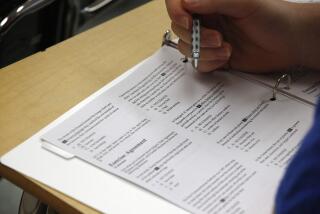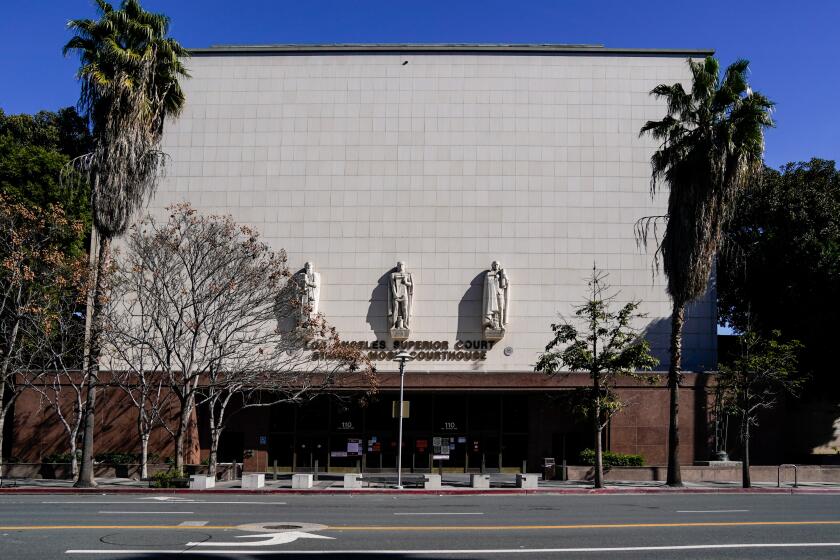College, too easy for its own good
As this year’s crop of college graduates leaves school, burdened with high levels of debt and entering a severely depressed job market, they may be asking themselves a fundamental question: Was college worth it?
And it’s no wonder they’re asking. Large numbers of the new graduates will face sustained periods of underemployment and low wages for years. Worse still, many of them were poorly prepared for the future, having spent four (or more) years of college with only modest academic demands that produced only limited improvement in the skills necessary to be successful in today’s knowledge-based economy.
We recently tracked several thousand students as they moved through and graduated from a diverse set of more than two dozen colleges and universities, and we found consistent evidence that many students were not being appropriately challenged. In a typical semester, 50% of students did not take a single course requiring more than 20 pages of writing, 32% did not have any classes that required reading more than 40 pages per week, and 36% reported studying alone five or fewer hours per week.
Not surprisingly, given such a widespread lack of academic rigor, about a third of students failed to demonstrate significant gains in critical thinking, complex reasoning and writing ability (as measured by the Collegiate Learning Assessment) during their four years of college.
The students themselves must bear some of the blame for this, of course. Improvement in thinking and writing skills requires academic engagement; simply hanging out on a college campus for multiple years isn’t enough. Yet at many institutions, that seems to be sufficient to earn a degree. At many schools, students can choose from a menu of easy programs and classes that allow them to graduate without having received a rigorous college education. Colleges are complicit, in that they reward students with high grades for little effort. Indeed, the students in our study who reported studying alone five or fewer hours per week nevertheless had an average cumulative GPA of 3.16.
To be sure, there were many exceptions to this dismal portrait of the state of undergraduate learning. Some academic programs and colleges are quite rigorous, and some students we followed pushed themselves and excelled. In general, traditional arts and science fields (math, science, humanities and the social sciences) tended to be more demanding, and students who majored in those subjects studied more and showed higher gains. So too did students attending more selective colleges. In addition, at every college and university examined, we found some students who were applying themselves and learning at impressive levels.
These real accomplishments do not, however, exonerate the colleges and universities that are happy to collect annual tuition dollars but then fail to provide many students with a high-quality education.
In much of higher education, the problem is in part that undergraduate education is no longer a top priority. Instead of focusing on undergraduates and what they are learning, schools have come to care more about such things as admission yields, graduation rates, faculty research productivity, pharmaceutical patents, deluxe dormitory rooms, elaborate student centers and state-of-the-art athletic facilities complete with luxury boxes. Many institutions favor priorities that can be boasted about in alumni magazines and admission brochures or that can help boost their scores in college rankings. Colleges have abandoned responsibility for shaping students’ academic development and instead have come to embrace a service model that caters to satisfying students’ expressed desires.
These trends have all added up to less rigor. California labor economists Philip Babcock and Mindy Marks, for example, have documented that full-time college students’ time spent studying dropped in half between 1960 and today. Moreover, from 1970 to 2000, as colleges increasingly hired additional staff to attend to student social and personal needs, the percentage of professional employees in higher education who were faculty decreased from about two-thirds to around one-half. At the same time, through their professional advancement and tenure policies, schools encouraged faculty to focus more on research rather than teaching. When teaching was considered as part of the equation, student course assessments tended to be the method used to evaluate teaching, which tends to incentivize lenient grading and entertaining forms of instruction.
So how should this academic drift of our colleges and universities be addressed? Some have proposed introducing a federal accountability system. We are against such a move, as federal regulation would probably be counterproductive and include a large set of detrimental, unintended consequences.
Accountability in higher education rightly resides at lower levels of the system. College trustees have at the institutional level the fiduciary responsibility to begin holding administrators accountable by asking: How are student learning outcomes and program quality being measured, and what is being done to address areas of concern that have been identified? Faculty must also take responsibility individually and collectively to define and ensure program quality and academic standards. Finally, student undergraduate cultures will have to change, with students themselves recognizing that they need more from college than a paper diploma and an expanded roster of Facebook friends.
Richard Arum, a professor of sociology and education at New York University, and Josipa Roksa, an assistant professor of sociology at the University of Virginia, are the authors of “Academically Adrift: Limited Learning on College Campuses.”
More to Read
A cure for the common opinion
Get thought-provoking perspectives with our weekly newsletter.
You may occasionally receive promotional content from the Los Angeles Times.






